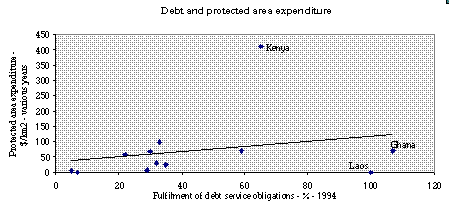
This leaflet summarises New and Additional? Financial Resources for Biodiversity Conservation in Developing Countries 1987-1994, a report by BirdLife International. For information on how to obtain the complete report, see end of this document.

Note: The top figure above each column shows total commitments including GEF. The left-hand figure below is for `mainstream' bilateral and multilateral aid; the right-hand figure is for GEF. Total GEF Pilot Phase (1991-93) commitments for biodiversity are divided into three equal parts.

Donors must increase total aid if they are to fulfil the obligation that increased funds for biodiversity conservation should be `new and additional' to total aid levels before 1992.

1. Global Biodiversity: Status of the Earth's Living Resources. WCMC 1992; National Investments in Biodiversity Conservation. James A.N., Green M.J.B. and Pain J.R. in press WCMC.
2. OECD unpublished figures; UN Department for Policy Coordination and Sustainable Development: Financial Flow Statistics: Adjustments for Monitoring the Financing of Agenda 21. Background Paper No. 7 for the Commission on Sustainable Development, Fourth Session, 18 April-3 May 1996. GEF: GEF Chairman's Report - July 1994; Annual Report 1995.
3. From OECD unpublished data.
4. UN, cf Note 3.
5. Development Cooperation 1995 Report. OECD.
6. See World Debt Tables 1996, World Bank.
7. Protected area expenditure from James et al., cf Note 1. Debt figures from World Debt Tables 1996.
8. Structural Adjustment, the Environment and Sustainable Development. Reed (ed.) 1996 Earthscan, London.
This World Wide Web site has been developed and maintained by
Information Habitat: Where Information Lives
For comments, questions and problems
please contact habitat@undp.org